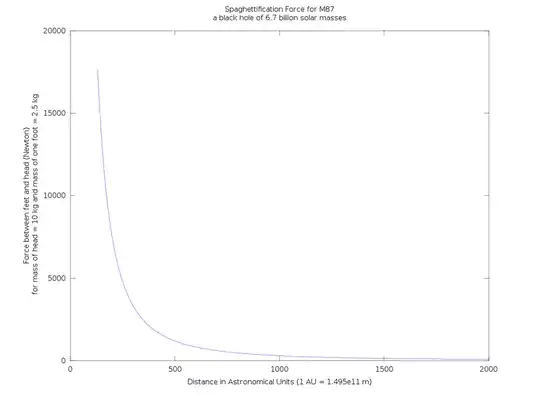A few months ago I was discussing the spaghettification phenomenon with my wife, just for the fun of it. This was when the mass of the supermassive black hole from M87 hit the news. The black hole was meant to have $6.7\times 10^9$ solar masses, so I thought it would be fun to figure out at which distance the tidal forces become so great, that the forces between your head and feet start getting... uncomfortable.
I defined the distance from feet to head to be 2 m, the head having a mass of 10 kg and one foot having a mass of 2.5 kg (I didn't research the numbers, I just did some wild guesses).
So, the force between head and foot should be:
$$G*m_B*m_H \over (d+2)^2$$ $$-$$ $$G*m_B*2*m_F \over d^2 $$ where $d$ is the distance from foot to the black hole, $m_B$ is the mass of the black hole, $m_H$ the mass of the head and $2*m_F$ the mass of the feet. Assuming you fall with the feet first.
This is one of the plots I made:
 (note: the plot only takes the mass of one foot into account.)
(note: the plot only takes the mass of one foot into account.)
I made up this short octave script to plot the forces on this values with the distance in AU as the free variable and thought "ouch, that's gonna hurt pretty soon". I haven't checked which part of the body will rip off first at what forces though...
Anyway, what I wanted to know is: Do my calculations make sense? Is my math correct?